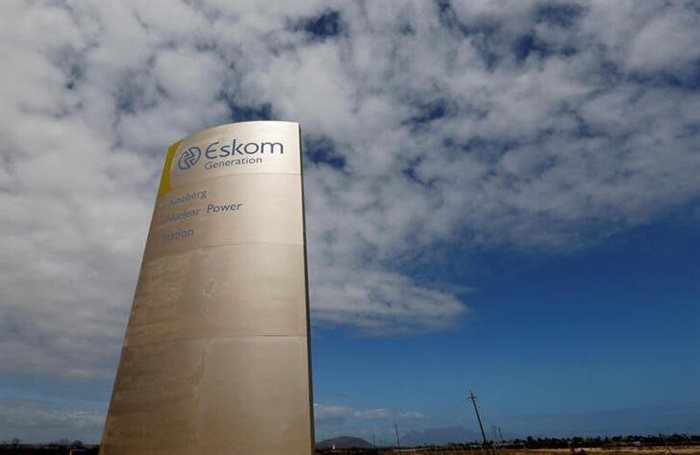Investors welcome Eskom debt relief plan
Investors were mostly positive about the South African government's plan to take on more than half of Eskom's debt over the next three years, viewing it as a path back to sustainability for the troubled state utility.

Source: Mike Hutchings/Reuters
The government plans to take on R254bn of Eskom's R423bn debt, which the National Treasury said was at risk of default.
That was the upper end of the one-third to two-third range that finance minister Enoch Godongwana had previously set out last year, prompting the rand and Eskom's international dollar bonds to rally as investors welcomed the cut in debt service costs.
"It's slightly more than what the market was expecting," said Max Wolman, a senior portfolio manager at Abrdn, which holds Eskom's overseas bonds. "Interest costs should come down and that should make Eskom a viable ... going concern."
The Treasury said that it would settle R184bn that Eskom owes over the next three years via a loan that converts to equity in the utility and then take on R70bn of debt directly in the 2025/26 financial year.
Phased approach
The phased approach speaks to the government's fiscal caution, "which is positive for investor confidence", said Khanyisa Phika, an economist at Alexforbes, a South African financial services firm that holds Eskom debt.
"We are certain that government is actually serious about turning around Eskom," she added.
"It's highly likely that it's credit positive for Eskom and credit-neutral for the sovereign," Jones Gondo, an analyst at Nedbank, said of the plan.
"If they don't meet the conditions of operational performance, then the loans they're getting from the government don't convert into equity and that slows down the credit trajectory."
No more bailouts after this one, says Godongwana
Godongwana told Reuters that there would be no more bailouts for Eskom after this one, adding that if it failed to comply with the debt relief conditions then "heads must roll".
These conditions include using the debt relief to only settle debt and interest payments and requiring Eskom to prioritise maintenance of its dilapidated coal power stations and capital expenditure on transmission and distribution.
But some investors said more clarity was required on these conditions and their enforcement.
"Other than withholding subsequent relief payments, there is no indication of other steps Treasury will take to assist the utility to return to sustainability," said Raphi Rootshtain, a portfolio manager at South African financial services firm Sasfin Wealth.
